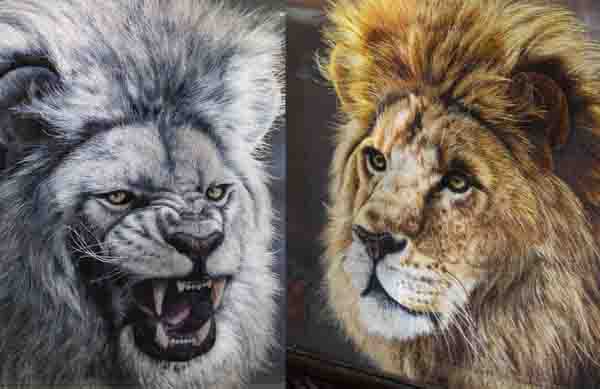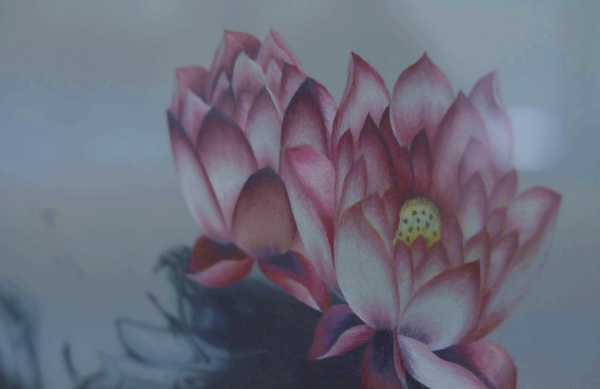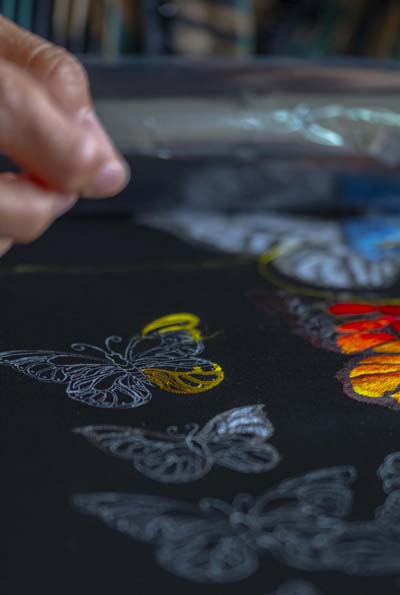Ou embroidery, a traditional embroidery handicraft from Wenzhou in east China's Zhejiang province, has a long history.
According to Wang Shi, a fourth generation inheritor of Shi family Ou embroidery skills, Ou embroidery has a history of more than 1,000 years.

Ou embroidery with different patterns on both sides. (People's Daily Online/He Zhuoyan)
Originated in the Tang and Song dynasties and flourished in the Ming and Qing dynasties, Ou embroidery "is distinguished by its simple patterns, bright and balanced colors, multiple varieties of precise stitches, and smooth and lustrous surfaces ," said Wang.
In 2008, Ou embroidery was listed in the second batch of national intangible cultural heritages by China's State Council.

"Lotus and Ink", a double-sided heterochromatic embroidery work designed by Wang Shi ((People's Daily Online/Ma Tianyi)
"Lotus and Ink", a double-sided heterochromatic embroidery work, was designed by Wang Shi, and was completed mostly by his mother, Shi Chengquan. Shi is the third generation inheritor of the Shi family Ou embroidery skills and also a national-level inheritor of the craft.

Embroidery crafter works on an artpiece. (People's Daily Online/He Zhuoyan)
Inspired by the vision of "ink splashing in water" and lotus, they made the first double-sided heterochromatic Ou embroidery work. One thread had to be divided into more than 10 thinner strands, each as thin as a hair, to reflect the abstract artistic concept of the work.
"If you read the Chinese characters hemo (Lotus and Ink) many times, they will sound similar to hemu (meaning harmony in English). Harmonious country, united family, the phrase carries a good meaning," Shi told People's Daily Online the hidden meaning behind her first heterochromatic Ou embroidery work.
"It took me half a year to complete it," Shi added.
Learning Ou embroidery is far from just acquiring the basic sewing skills.
"Ou embroidery also requires one to master the skills of traditional Chinese realistic painting, traditional Chinese painting, oil painting, watercolor painting and sketching," said Shi, noting that "so that the embroidery works will resemble the paintings. It's very difficult to flawlessly combine realism and abstractionism, and ensure balanced color in an embroidery work."
To attract more young people to accept and love the art, Wang and his family usually combine the traditional Ou embroidery with fashionable items and clothing. "We should engage in more art forms and broader forms of expression," said Wang.